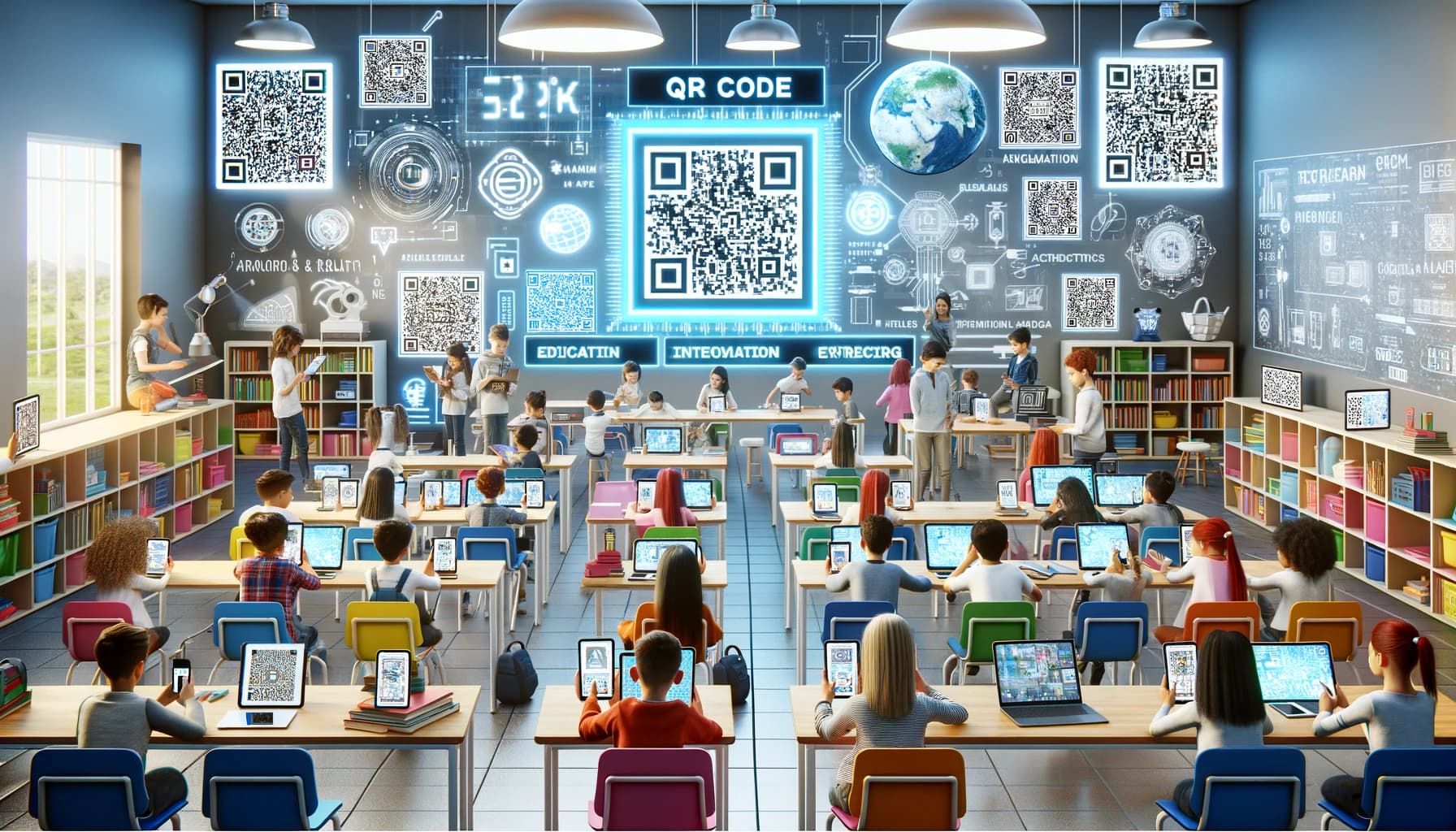Unlocking the Future: Innovative Uses of QR Codes in Education and Learning
February 22, 2024

In the ever-evolving landscape of education, technology plays a pivotal role in shaping innovative learning experiences. Among these technological advancements, QR codes have emerged as a powerful tool, transforming the way educators and students interact with information and each other. Let's embark on a journey to explore the innovative uses of QR codes in education and learning, uncovering how these simple, yet versatile, tools are unlocking new possibilities and enhancing educational outcomes.
The QR Code Revolution in Education
A New Era of Interactive Learning
Gone are the days of traditional, textbook-heavy classrooms. In today's digital age, QR codes are paving the way for interactive and immersive learning experiences. These two-dimensional barcodes, when scanned with a smartphone or tablet, can instantly connect students to a world of digital resources, from videos and audio lectures to interactive quizzes and eBooks.
Bridging the Digital Divide
QR codes are not just about convenience; they're also about accessibility. By providing quick access to digital resources, they help bridge the digital divide, ensuring that students from various backgrounds have equal opportunities to learn and thrive in a technology-driven world.
Unlocking the Potential: Innovative Uses in the Classroom
Enhanced Learning Materials
Imagine textbooks and worksheets coming to life with videos, 3D models, and interactive simulations. QR codes make this possible by linking printed materials to dynamic digital content, offering students a richer, more engaging learning experience.
Streamlining Homework and Assignments
Homework doesn't have to be a chore. With QR codes, teachers can provide students with instant access to assignment instructions, additional resources, and even online submission portals, making the homework process more efficient and less daunting.
Facilitating Flipped Classrooms
The flipped classroom model, where students learn new content at home and apply it in class, thrives with QR codes. Teachers can share lecture videos and preparatory materials through QR links, allowing class time to be dedicated to hands-on activities and discussions.
Interactive Classroom Management
QR codes can also revolutionize classroom management. From quick access to attendance sheets and seating charts to interactive behavior management systems, these codes streamline administrative tasks, allowing teachers to focus more on teaching and less on paperwork.
Beyond the Classroom: QR Codes in Education
Enhancing School Libraries
School libraries can harness QR codes to guide students to book reviews, author interviews, and related digital content, enriching the reading experience and encouraging exploration beyond the physical book.
Simplifying Access to School Services
Need to check the school lunch menu or find out about the next PTA meeting? QR codes posted around the school can provide instant access to a wide range of services and information, making school communication more efficient and engaging.
Supporting Special Education
QR codes hold particular promise for special education, offering customized learning aids, visual schedules, and easy access to supportive resources, thereby enhancing learning for students with diverse needs.
Empowering Parents and Community Engagement
Schools can use QR codes to strengthen the home-school connection, sharing updates, event notifications, and resources for parents to support their children's learning at home, fostering a collaborative educational environment.
The Challenges and Considerations
While the benefits are plentiful, integrating QR codes into education isn't without its challenges. Issues such as digital equity, privacy concerns, and the need for teacher training on effective implementation must be addressed to fully harness the potential of QR codes in learning environments.
Looking Ahead: The Future of QR Codes in Education
As we continue to navigate the digital transformation of the classroom, the potential of QR codes in education is boundless. From augmented reality (AR) experiences to global classroom connections, the journey is just beginning. The key to success lies in innovative thinking, collaborative efforts, and a commitment to creating inclusive, engaging, and effective learning experiences for all students.
Conclusion
The innovative uses of QR codes in education and learning are revolutionizing the way we think about and engage with educational content. By offering interactive, accessible, and efficient solutions, QR codes are not just enhancing learning outcomes; they're also preparing students for a future where technology and information are at their fingertips. As educators continue to explore and embrace these possibilities, the potential for transformative learning experiences is limitless. The future of education is here, and it's encoded in those little black and white squares.
FAQs
1. How do QR codes enhance interactive learning? QR codes transform passive learning materials into interactive experiences, linking to videos, simulations, and other dynamic content that enriches the learning process.
2. Are QR codes accessible to all students? Yes, QR codes can help bridge the digital divide by providing easy access to digital resources, though ensuring that all students have access to a device capable of scanning them is crucial.
3. How can QR codes streamline homework assignments? Teachers can use QR codes to provide direct links to assignment instructions, resources, and submission portals, making the process more efficient for students.
4. What role do QR codes play in flipped classrooms? QR codes facilitate flipped classrooms by allowing teachers to share lecture videos and preparatory materials for students to engage with at home, maximizing in-class time for interactive learning.
5. Can QR codes improve school library experiences? Yes, QR codes can enrich library experiences by linking to book reviews, author interviews, and digital resources related to physical books.
6. How do QR codes support special education? QR codes offer customizable learning aids and easy access to resources, supporting diverse learning needs in special education settings.
7. What are some challenges in using QR codes in education? Challenges include ensuring digital equity, addressing privacy concerns, and providing adequate teacher training on QR code integration.
8. What is the future of QR codes in education? The future looks bright, with possibilities ranging from AR learning experiences to global classroom connections, as long as educators continue to innovate and adapt.